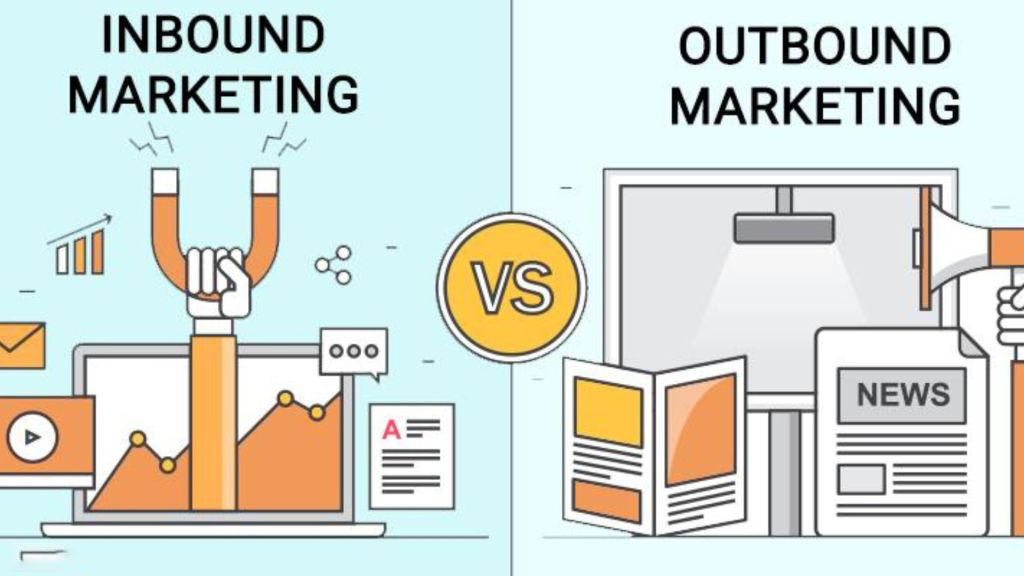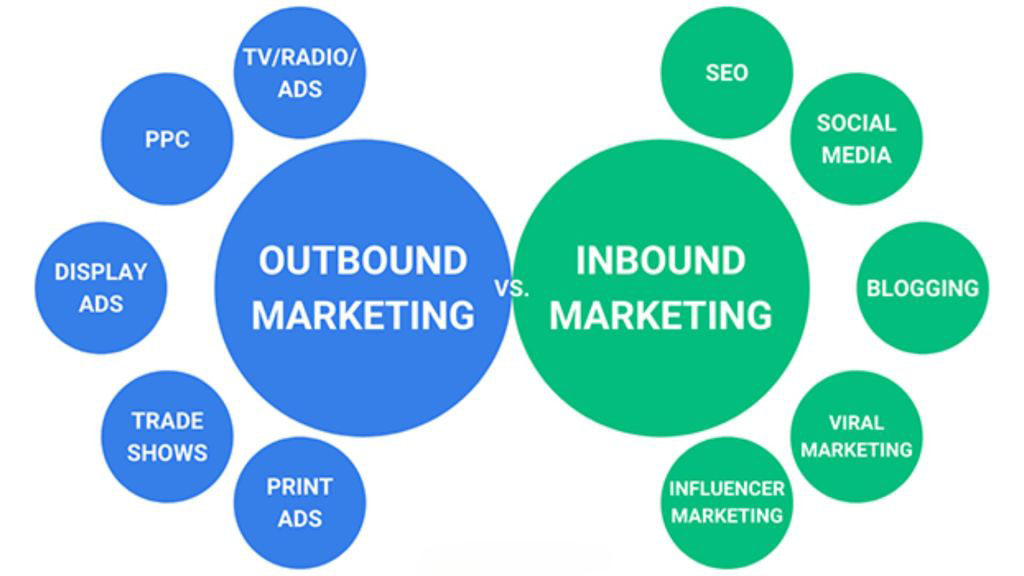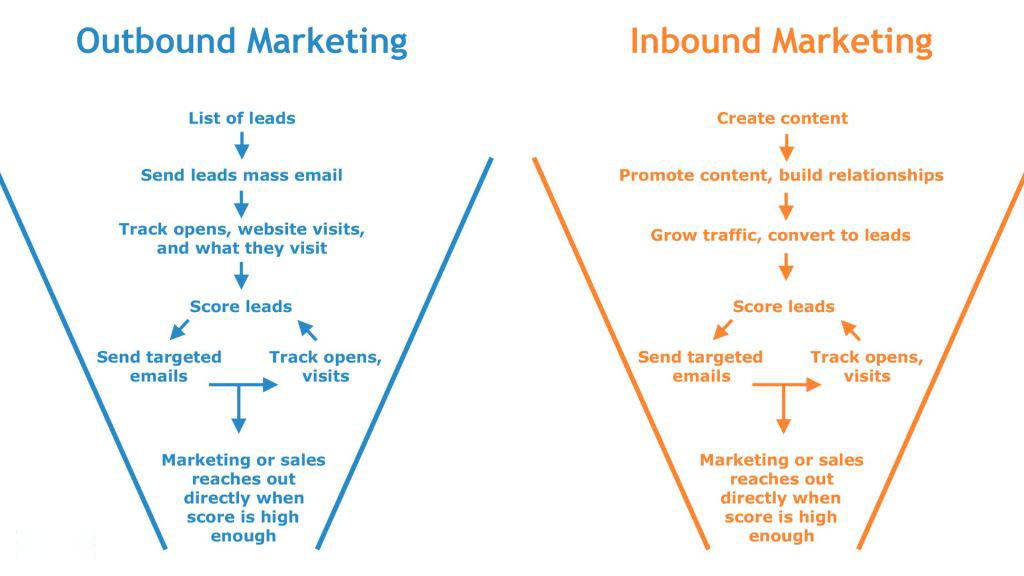Imagine you’re at a party. A group is having a blast in one corner, sharing stories and laughing. Across the room, someone stands on a chair, yelling their message at everyone. Who are you more likely to approach and engage with? That is the main distinction between inbound marketing vs outbound . Inbound marketing attracts potential customers by creating valuable content that addresses their needs and interests. On the other hand, outbound marketing takes a more forceful approach, directly interrupting people with your message.
In today’s digital age, both inbound and outbound marketing have their place. But how do you choose the right strategy for your business? Let’s delve deeper into the world of inbound vs outbound marketing to help you make an informed decision.
Inbound Marketing vs Outbound Marketing: A Tale of Two Worlds
Inbound Marketing: Attract, Engage, Delight
Inbound marketing creates a welcoming environment where potential customers can discover your brand. Here’s how it works:
- Attract: You write articles, videos, infographics, and social media posts of high quality that satisfy the hobbies and problems of your target audience. People from search engines, Facebook, and Twitter will visit your site more often if it has this kind of content. It makes you look like you know a lot about your subject. It makes you appear like an expert in your field.

- Engage: Once visitors arrive at your website, you nurture them with lead magnets like ebooks, webinars, and email newsletters. This lets you capture their contact information and continue building relationships with them.
- Delight: By providing valuable content and addressing their needs throughout the buyer’s journey, you turn leads into loyal customers and brand advocates.
Benefits of Inbound Marketing:
- Cost-effective: Inbound marketing offers a higher return on investment (ROI) than outbound methods. Unlike one-off outbound campaigns, the content you create keeps attracting leads over time.
- Targeted Reach: By focusing on relevant keywords and topics, you attract qualified leads already interested in your product or service.
- Builds Trust and Credibility: Inbound marketing allows you to establish yourself as an expert in your field, fostering trust and credibility with potential customers.
Examples of Inbound Marketing:
- Creating blog posts that answer common customer questions
- Developing informative ebooks and white papers
- Running engaging social media campaigns
- Putting together an email list and sending messages to certain people.
Outbound Marketing: Get Your Message Out There
Older methods of getting your word to people who might become customers include outbound marketing and inbound marketing. Here are some standard techniques:
- Cold Calling: Calling possible customers, often with scripts already written, to learn more about them.
- Email Marketing (Purchased Lists): Sending promotional emails to a purchased list of contacts who may or may not be interested in your offering.

- Print and Television Ads: Placing advertisements in newspapers, magazines, or on television to reach a broad audience.
- Trade Shows and Events: Attending industry events and conferences to promote your product or service.
Benefits of Outbound Marketing:
- Faster Lead Generation: Outbound marketing can generate leads quickly, especially for businesses with a well-defined target audience.
- Brand Awareness: Outbound methods like TV commercials or billboards can help you reach a large audience and increase brand awareness.
- Targeted Outreach: With some outbound techniques, like trade shows, you can target a specific audience interested in your niche.
Examples of Outbound Marketing:
- Cold-calling potential customers to introduce your product or service
- Sending promotional emails to a purchased list segmented by demographics
- Running display ads on high-traffic websites
- Participating in industry conferences and trade shows
Choosing the Right Strategy: Inbound Marketing vs Outbound
So, which marketing approach is right for your business? The answer is that it depends. Here are some factors to consider when making your decision:
- Your Budget: Inbound marketing requires an investment in content creation and SEO, while outbound marketing often involves upfront costs for advertising or outreach.
- Your Target Audience: Consider how your ideal customer searches for information. Are they actively researching solutions online or are they more receptive to traditional advertising methods?
- Your Business Goals: Are you seeking long-term brand awareness or immediate lead generation?
- Your Sales Funnel: Inbound marketing works well for nurturing leads throughout the buyer’s journey. In contrast, outbound marketing can effectively reach prospects already close to making a purchase.

The Power of Combining Inbound and Outbound Marketing
In many cases, the best approach is to leverage both inbound marketing vs outbound strategies. Outbound marketing lets you contact more people immediately and get their attention, while inbound marketing helps you build trust with leads over time.
For example, you could create valuable blog content that attracts potential customers to your website. Then, you can leverage outbound marketing tactics like retargeting ads to reach those visitors who still need to convert, reminding them of your brand and prompting them to take action.
This combined approach allows you to:
- Reach a Wider Audience: You can catch more leads at different times of the buyer’s journey if you use either inbound or outbound methods.
- Maximize ROI: While inbound marketing offers long-term benefits, outbound marketing can help you generate leads quickly. This combination allows you to optimize your marketing budget and see results faster.
- Create a Seamless Customer Experience: Using the same message for both incoming and outgoing channels can give potential customers a smooth and positive experience, eventually leading to a higher conversion rate.
The Future of Marketing is All About Inbound and Outbound Alignment
Even though marketing is constantly changing, one thing is still true: companies that take a whole-person approach will be successful in the future. If you know the pros and cons of both inbound marketing vs outbound , you can make an effective plan that attracts, engages, and pleases your target group.
Ready to Explore How OCH Can Help You Craft a Winning Marketing Strategy?
Our creative digital marketing agency, OCH , helps businesses create and run successful inbound and outbound marketing programs. Understanding how important it is to make your method fit your goals and audience is something we do.



